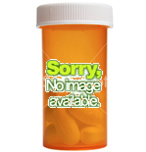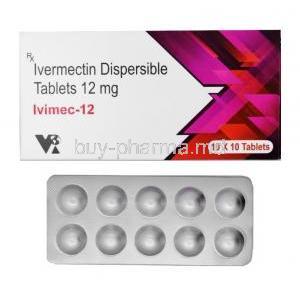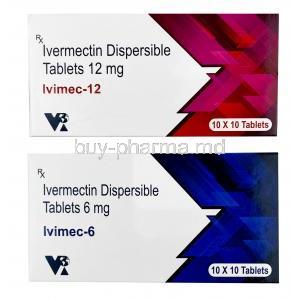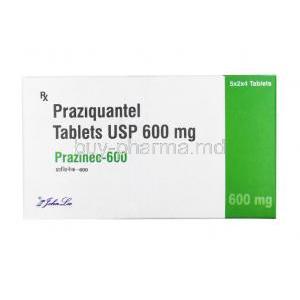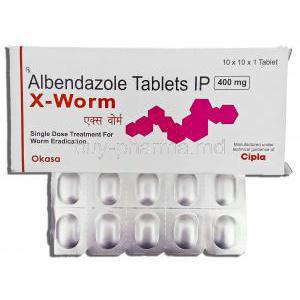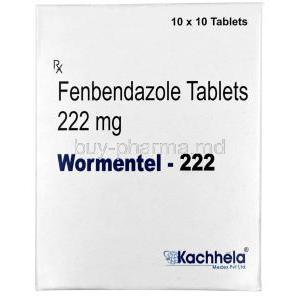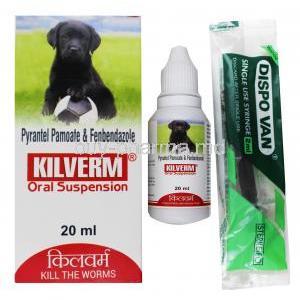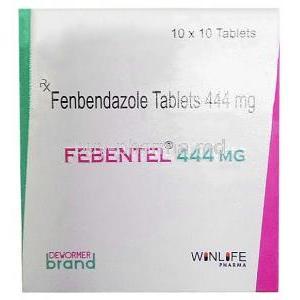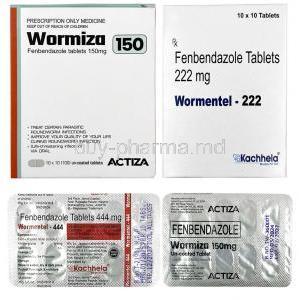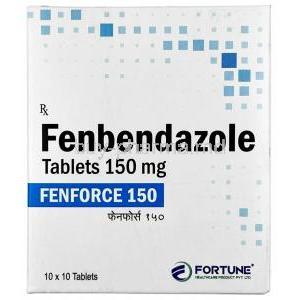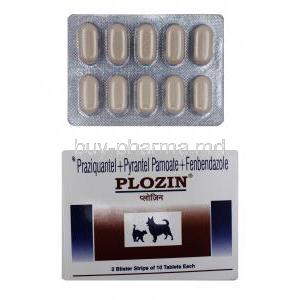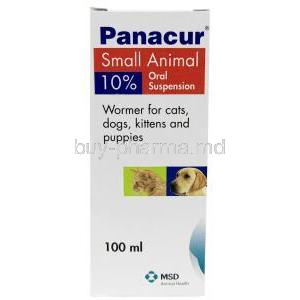Introduction to Certifect for Dogs
Certifect for Dogs is a potent topical antiparasitic solution designed to combat both flea and tick infestations in canines. Its advanced formula offers dual-action efficacy, not only killing existing parasites but also disrupting their life cycle to prevent reinfestation. This veterinary-grade treatment delivers broad-spectrum protection and is particularly valuable for dogs in tick-prone environments.
Manufactured by Merial, a well-regarded leader in animal health, Certifect is approved by major regulatory authorities including the U.S. Food and Drug Administration (FDA) and the European Medicines Agency (EMA). Its regulatory clearance underscores its safety and therapeutic reliability for routine use.
Unlike conventional flea preventatives, Certifect incorporates the synergistic power of three active ingredients, offering faster tick detachment and superior flea inhibition. Its dual acaricidal and insecticidal actions set it apart from many fipronil-only or isoxazoline-based products.
Certifect is formulated exclusively for dogs and is unsuitable for feline use. Its clinical scope includes pets of varying sizes and breeds, making it a versatile choice in routine and seasonal parasitic control.
Composition and Active Ingredients
Certifect features a potent combination of three active ingredients:
- Fipronil: A phenylpyrazole compound that disrupts the central nervous system of insects and acarines, leading to rapid paralysis and death.
- Amitraz: A formamidine acaricide known for its ability to induce rapid tick detachment and disrupt tick physiology.
- (S)-methoprene: An insect growth regulator (IGR) that interferes with flea development, preventing larval maturation and reproductive cycles.
These components work synergistically to offer fast knockdown and long-lasting protection. The fipronil and amitraz target adult parasites, while (S)-methoprene acts on eggs and larvae, ensuring multilayered control.
The formulation also contains inert solvents and stabilizers to ensure optimal skin absorption and stability. The solution is alcohol-based, enhancing dermal penetration and spreading uniformly across the skin surface.
How Certifect for Dogs Works: Mechanism of Action
Each active ingredient in Certifect contributes a unique mechanism of action:
- Fipronil disrupts the GABA-regulated chloride channels in the parasite's nervous system, causing hyperexcitation, loss of motor control, and death.
- Amitraz acts as an agonist on octopamine receptors in ticks, impairing neuromuscular transmission and leading to tick detachment and death.
- (S)-methoprene mimics juvenile hormones in fleas, preventing eggs and larvae from maturing into adult forms and thus halting the infestation cycle.
Certifect begins working within 6 hours of application, with tick detachment typically observed within 24 hours. Flea mortality occurs rapidly and is maintained for up to 30 days post-application.
Approved and Off-Label Uses of Certifect for Dogs
The primary indication for Certifect is the control and prevention of flea (Ctenocephalides spp.) and tick (Ixodes, Dermacentor, Rhipicephalus spp.) infestations. This includes protection against disease vectors such as Lyme disease, Rocky Mountain spotted fever, and ehrlichiosis.
Secondary benefits include the interruption of flea allergy dermatitis (FAD) cycles and reduced transmission risk of tick-borne pathogens.
Off-label use may involve treating Sarcoptes scabiei infestations or acting as a supplemental product in cases of mixed parasitic burdens, though such applications require veterinary supervision.
In comparison to isoxazoline-based drugs, Certifect offers faster tick repellent action and superior tick detachment, particularly in the first 24 hours post-application.
Dosage and Administration Guidelines
Dosage is determined by body weight, with single-use pipettes tailored for weight brackets (e.g., 10–20 kg, 20–40 kg). A single dose is applied monthly for ongoing protection.
- Apply directly onto the skin between the shoulder blades and along the spine.
- Ensure skin contact by parting the fur before application.
- Do not apply on broken skin or excessively wet coat.
If a dose is missed, administer as soon as remembered, but do not double up. Reapplication before the 30-day interval is not recommended unless advised by a veterinarian.
Dogs should not bathe or swim within 48 hours of application to ensure optimal absorption. After that period, Certifect remains waterproof and effective.
Storage Instructions and Shelf Life
Certifect should be stored at controlled room temperatures, ideally between 15°C and 30°C. Avoid freezing or exposing to direct sunlight.
The shelf life of unopened pipettes is typically 2 years from the manufacturing date. Once opened, the contents should be used immediately.
To maintain potency:
- Keep in original packaging until use.
- Store away from moisture and heat sources.
- Do not use past the expiration date on the label.
Expired or unused product should be disposed of according to local veterinary waste guidelines. Do not flush into drains or dispose in household trash.
Potential Side Effects of Certifect for Dogs
7.1 Common Side Effects
- Mild, transient redness or itching at the application site
- Lethargy or temporary behavioral changes within 24 hours
- Occasional nausea, vomiting, or excessive drooling
These reactions are typically self-limiting and resolve without medical intervention.
7.2 Rare or Severe Side Effects
- Neurological symptoms such as tremors, unsteadiness, or hypersalivation
- Severe allergic reactions including facial swelling or respiratory distress
- Marked agitation, vocalization, or disorientation
In such cases, immediate veterinary evaluation is warranted. Dogs with a history of seizure disorders may require alternative treatments.
Drug and Product Interactions
Certifect should not be used concurrently with other topical flea or tick treatments containing similar compounds (e.g., additional fipronil-based solutions) due to the risk of overdose.
Use caution when combining Certifect with monoamine oxidase inhibitors (MAOIs), as amitraz may potentiate sedative effects or serotonergic toxicity.
Systemic antiparasitic drugs (e.g., milbemycin oxime) are generally compatible but should be cleared by a veterinarian.
Veterinarians may recommend specific combinations for broad-spectrum parasite control, but concurrent topical use requires careful risk assessment.
Warnings and Contraindications
- Small breed dogs and toy breeds may exhibit increased sensitivity to amitraz.
- Certifect is contraindicated in debilitated, aged, or hypersensitive dogs without veterinary oversight.
- Do not use in cats—ingestion or contact can be fatal.
- Avoid contamination of aquatic environments; amitraz is highly toxic to fish and other aquatic organisms.
Prior to initiating therapy, conduct a complete clinical assessment to rule out contraindications and determine appropriate parasitic control strategies.
Important Precautions and Safety Measures
Certifect for Dogs is a potent veterinary medication that must be administered with caution to ensure both animal and human safety. To avoid adverse effects, certain precautions must be followed before, during, and after application.
- Preventing ingestion by licking or grooming: Following application, dogs should be monitored to prevent self-grooming or licking the treated area. If multiple pets are present in the household, they should be separated temporarily to prevent cross-grooming, which may lead to ingestion of the product and possible toxicity.
- Human safety precautions during application: The product may cause skin or eye irritation in humans. It is recommended that adults apply the treatment, and children should be kept away from the dog during and after application until the site has dried completely.
- Avoiding contact with eyes or mucous membranes: Care should be taken to prevent the solution from entering the dog’s eyes, nose, or mouth. If accidental contact occurs, rinse thoroughly with clean water and seek veterinary or medical advice if irritation persists.
- Use of gloves or handwashing post-application: Disposable gloves should be worn during application, especially for individuals with sensitive skin. If gloves are not used, hands should be washed thoroughly with soap and water immediately after handling the product.
Guidelines for Careful Administration
11.1 Dogs with Pre-existing Health Conditions
Certifect should be administered with heightened vigilance in dogs with underlying medical issues. Certain health conditions may increase the risk of adverse reactions or complicate metabolism and clearance of the active compounds.
- Neurological disorders or seizures: Dogs with a known history of epilepsy, tremors, or other neurologic abnormalities may be at higher risk for central nervous system side effects. Veterinary evaluation is essential before initiating therapy.
- Liver or kidney dysfunction: As these organs play a critical role in metabolizing and excreting medications, dogs with hepatic or renal insufficiency should be closely monitored. Dose adjustments are generally not needed for topical agents, but observation for systemic effects is prudent.
11.2 Dogs on Concurrent Medications
In multi-medicated dogs, particularly those on chronic therapies, the potential for drug interactions must be evaluated.
- Risk assessment before co-administering with sedatives or antiepileptics: Amitraz may have sedative properties and could potentiate the effects of tranquilizers, anxiolytics, or anticonvulsants.
- Veterinary consultation for polypharmacy situations: A thorough review of all ongoing treatments—including supplements and nutraceuticals—is essential to reduce the likelihood of adverse pharmacological interactions.
Administration in Special Populations
12.1 Use in Elderly Dogs
Aging alters pharmacokinetics and pharmacodynamics, potentially making senior dogs more sensitive to chemical agents.
- Metabolic and sensitivity considerations: Reduced metabolic rate and diminished detoxification capacity can lead to prolonged systemic exposure. Start with standard dosing but monitor closely.
- Geriatric care recommendations: Avoid administering Certifect to dogs with significant mobility issues near application sites or dogs exhibiting cognitive dysfunction that may result in excessive grooming.
12.2 Use in Pregnant or Lactating Dogs
Limited data are available on the safety of Certifect in pregnant and nursing animals. The product should only be used when the potential benefits outweigh the risks.
- Pregnancy: While topical agents generally have minimal systemic absorption, avoid use during the first trimester unless absolutely necessary.
- Lactation: Contact with puppies through nursing or grooming may lead to inadvertent exposure. Monitor nursing puppies for signs of adverse effects such as excessive salivation or gastrointestinal upset.
12.3 Use in Puppies and Small Breeds
Young and small dogs may be more vulnerable to the systemic effects of parasiticides due to immature metabolic systems and lower body mass.
- Minimum age and weight: Certifect is only approved for use in dogs over 8 weeks of age and above a certain weight threshold as indicated on the product packaging.
- Developmental sensitivity: Puppies have immature liver enzymes and may be less efficient at processing amitraz or fipronil.
- Dosing modifications or alternatives: Consult a veterinarian to determine whether an adjusted dose or alternative flea and tick preventative is more appropriate for small breeds or underweight animals.
Overdose and Toxicity Management
While topical treatments are less likely to result in systemic overdose, accidental ingestion or misapplication can lead to toxicity.
- Signs of overdose: Excessive salivation, vomiting, diarrhea, tremors, ataxia, or depression. In severe cases, seizures or respiratory depression may occur.
- Emergency protocol: If overdose is suspected, immediate veterinary attention is required. Decontamination (e.g., bathing with mild soap) and symptomatic treatment may be necessary.
- Supportive care: This may include intravenous fluids, antiemetics, anticonvulsants, and thermoregulation, depending on the severity of symptoms.
Handling and Application Precautions
Proper handling ensures user safety and environmental protection while maintaining product efficacy.
- Safe handling practices: Apply in a well-ventilated area. Avoid touching treated skin until completely dry. Children should not be allowed to handle the product.
- Disposal of applicators and packaging: Used pipettes and packaging should be disposed of according to local veterinary waste guidelines. Do not reuse applicators.
- Environmental considerations: Prevent treated dogs from entering bodies of water within 48 hours of application. Amitraz and fipronil are harmful to aquatic life and may contribute to environmental contamination if not properly managed.

